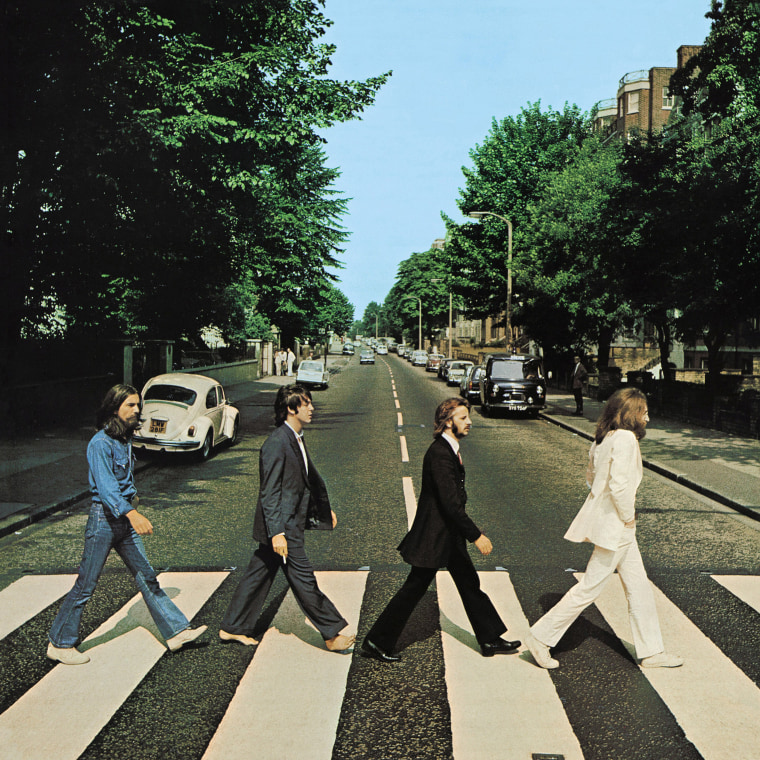Fifty years ago this week, arguably the world’s most celebrated and inarguably the most commercially successful rock band delivered its final studio album “Abbey Road” to the masses. But within a matter of weeks of the LP’s completion in August 1969, the group had disbanded in a spate of bitter acrimony.
The album’s famous cover photograph depicts the band strolling away from EMI Recording Studios, the space where it had recorded the vast majority of its music. And save for the 1970 release of the “Let It Be” soundtrack, “Abbey Road” was effectively the Beatles’ final achievement as a foursome, their last message to a global audience that had watched them evolve from four mop tops into the finest and most successful musical craftsmen of their generation.
Save for the 1970 release of the “Let It Be”soundtrack, “Abbey Road”was effectively the Beatles’ final achievement as a foursome.
And while many listeners place “Abbey Road” at or near the top of the Beatles’ roster of album-length achievements, it wasn’t always that way. In fact, when the LP was originally released in the autumn of 1969, it was met with a rocky introduction in the popular press. In his October 1969 review in The New York Times, Nik Cohn lauded the album’s concluding symphonic suite before panning the remainder of its contents, which included such classics as “Come Together,” “Something” and “Here Comes the Sun,” deriding them as “pretty average stuff.”
The editors of Rolling Stone magazine were so uncertain about the quality of “Abbey Road” that they commissioned two separate reviews of the LP. Up first was Ed Ward, who disparaged the record for traversing “a rather tenuous line between boredom, Beatledom, and bubblegum.” And unlike Cohn, Ward couldn’t stand the songs that comprised the medley, describing them as “so heavily overproduced that they are hard to listen to.”
Thankfully, reviewer John Mendelsohn came out shortly with a more nuanced reading of “Abbey Road.” In his bravura review, Mendelsohn described “Abbey Road”as being “breathtakingly recorded” and declared the medley as equal to “the whole of ‘Sgt. Pepper,’” observing “that the Beatles can unify seemingly countless musical fragments and lyrical doodlings into a uniformly wonderful suite.”
Indeed, it is the relative swiftness with which the Beatles recorded “Abbey Road” that belies its complexity and power, even 50 years later. By that fabled summer of 1969, the Beatles were at the top of their game — as songwriters, musicians, artists. The medley that concluded the album — and, fittingly, their career — was chock-full of unforgettable musical drama and wordplay, including heartrending numbers such as “Golden Slumbers” and “Carry That Weight.” The high-octane rock ‘n’ roll panache in “The End” included this philosophical couplet: “And in the end, the love you take is equal to the love you make.” As the Beatles’ de facto epitaph, those words will surely echo across the centuries.
But "Abbey Road’s” majesty didn’t mean fans were ready for the Beatles to exit the stage just yet. Rumors of a potential reunion would flourish throughout the 1970s, culminating in 1976 with promoter Sid Bernstein’s eye-popping offer of a $230 million payday. “There were phenomenal amounts of money being offered,” Paul McCartney later recalled. “But it just went round and round. There might be three of us thinking, ‘It might not be a bad idea’ — but the other one would go, ‘Nah, I don’t think so,’ and sort of veto it.”
As it happened, McCartney and John Lennon considered only one offer during their post-Beatles years together — and it was easily the cheapest of the lot. It was during the April 24, 1976, episode of “Saturday Night Live” when producer Lorne Michaels took to the airwaves and made a pitch for the band to reunite. “The National Broadcasting Company has authorized me to offer you this check to be on our show,” he said, holding up a certified check for $3,000 — far less than they had received for their appearances on “The Ed Sullivan Show” in February 1964.
As it turned out, Lennon and McCartney were watching “SNL” that night across town in John’s Dakota apartment building. “Paul and I were together watching that show,” Lennon remarked during one of his last interviews. “He was visiting us at our place in the Dakota. We were watching it and almost went down to the studio, just as a gag. We nearly got into a cab, but we were actually too tired.”
Of course, Lennon’s murder in December 1980 would dash any hopes of a Beatles reunion, leaving “Abbey Road” as their last musical statement to the world. In so doing, they would create a mystique that lingers to this day. It was the greatest mic drop in the history of popular music.

